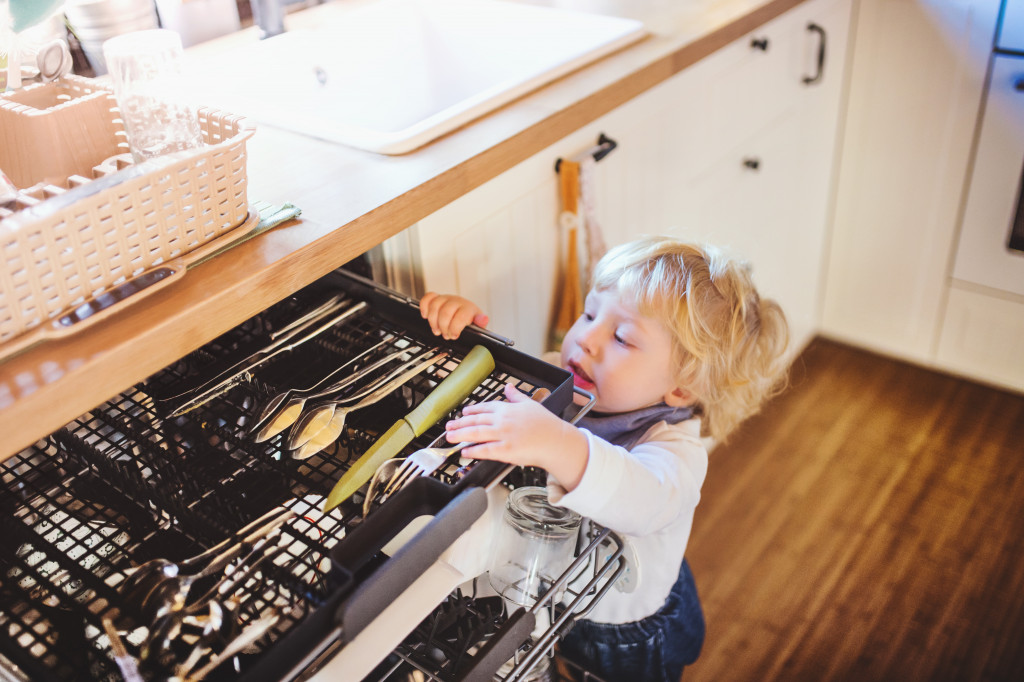- Educate children about stranger danger and role-play scenarios.
- Monitor online activities and have open communication with children about online safety.
- Set boundaries and regularly check in on your child’s whereabouts using technology if needed.
- Teach children basic safety skills such as memorizing their full name and emergency procedures.
- Secure your home with tools such as padlock cylinders to prevent potential dangers.
The responsibility of ensuring a child’s safety is one of the paramount concerns of every parent. In a world where dangers lurk around every corner, how can you be certain you’re doing all you can to protect your little one? Fortunately, with awareness, diligence, and a few preventative measures, you can create a secure environment for your child. Here are five key tips to guide you in this essential task.
1. Educate Them About Stranger Danger
Children need to understand the concept of ‘stranger danger.’ While you don’t want to instill unnecessary fear, you should teach them the importance of being cautious around people they don’t know. Make them aware that not all strangers are necessarily harmful, but keeping a safe distance is always best.
Additionally, role-playing scenarios can be beneficial. This allows children to practice what they’d do if approached by someone they don’t recognize, ensuring they’re prepared for real-life situations.
2. Monitor Their Online Activities

The digital realm is a double-edged sword, offering vast knowledge and potential risks. With children accessing the internet at increasingly younger ages, it’s crucial to be aware of their online activities. Ensure they’re visiting age-appropriate websites and using child-safe search engines.
Open communication is key. Regularly discuss online safety and ensure they understand the importance of not sharing personal information, recognizing cyberbullying, and reporting anything unusual to a trusted adult.
3. Set Boundaries and Check-In Regularly
Setting boundaries helps children understand their limitations and ensures their safety. This might include defining play areas in your neighborhood or setting curfews. Make it clear where they can and can’t go without adult supervision.
Additionally, regular check-ins are essential, especially as your child grows and seeks more independence. Whether it’s a call to confirm they’ve reached a destination or using location-sharing apps, keeping tabs offers peace of mind.
Here are tips to set boundaries with children:
Effective Communication is Key
To establish healthy boundaries, initiating an open and honest discussion with your children about why these boundaries are necessary is important. This dialogue will enable them to comprehend the underlying reasons behind the rules, fostering compliance and respect for the established restrictions.
Use Technology as an Aid
In today’s digital age, leveraging technology can provide an additional layer of assurance regarding the safety of your children. Consider utilizing GPS tracking apps that offer real-time updates on your child’s whereabouts. This technology can not only reinforce your peace of mind but also serve as a means to ensure their safety without intruding upon their privacy.
Gradual Relaxation of Boundaries
As children grow and mature, their natural inclination towards independence becomes more pronounced. It is important to accommodate this growth by gradually loosening restrictions, allowing them to demonstrate their responsibility and earn your trust. By providing them with increased autonomy over time, you empower them to develop essential life skills while maintaining a supportive and safe environment.
Prompt and Consistent Check-Ins
Encouraging your child to consistently check in, particularly when they arrive at a new location, is crucial. This practice confirms their safety and instills a sense of responsibility and accountability. By fostering regular communication, you establish a strong foundation of trust and ensure their well-being is continuously monitored.
4. Teach Them Basic Safety Skills

Knowledge is empowerment, even for little ones. Teach your children basic safety skills, such as memorizing their full name, address, and contact number. This information can be invaluable if they are lost or in an emergency.
Moreover, familiarize them with emergency procedures. This includes understanding when and how to dial emergency numbers, basic first aid practices, and recognizing signs of danger, like the smell of gas or the sound of a smoke alarm.
5. Secure Your Home with Tools
The home should be a sanctuary, but potential dangers can still exist within its walls. Regularly inspect your living space for risks like sharp objects, choking hazards, and accessible toxic substances. Moreover, ensure that windows, especially those on upper floors, have secure locks to prevent curious children from opening them.
One often overlooked aspect is the exterior doors. Investing in a sturdy padlock cylinder can provide an added layer of security, ensuring that doors remain firmly locked when needed. It keeps potential threats out and ensures that adventurous toddlers don’t wander off unsupervised.
In Summary
Ensuring your child’s safety might feel like a never-ending task, but it’s entirely feasible with the right measures and a proactive approach. You’re creating a protective shield around them by educating your child, monitoring their activities, setting clear boundaries, equipping them with essential safety knowledge, and securing your home with tools like a padlock cylinder. Remember, it’s always better to be over-prepared than under, especially when it comes to the well-being of your little one.

